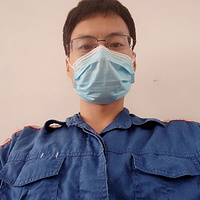油泵不出油原因怎么排除,油泵不出油原因怎么排除故障

文章标题:Pump won't pump oil, what to do? How to deal with the reasons why the pump won't pump oil?_Baidu Zhidao
油泵不上油的原因有油泵装配不良、壳子不严有空气进入、油管系统不严有空气进入出现漏气、吸油管路出现堵塞等;解决方法是油泵拆装安装时要正确、将密封 …
1. The pump assembly is defective or reversed.
2. The pump housing is not airtight and air enters.
3. The oil pipe system is not airtight and there is a leak.
4. The oil suction line is blocked. The pump is a light and compact pump, with three types: in-line, distributive and single. The pump needs a power source to operate. Its lower camshaft is driven by the engine crankshaft gear. The pump puts forward a pump with a housing made of an aluminum material and a movable molded part arranged in the housing, wherein the movable molded part is at least partially made of a sinterable material containing at least one austenitic iron-based alloy, and wherein the molded part made of a sinterable material has a thermal expansion coefficient of at least 60% of the thermal expansion coefficient of the housing. Mechanical brief introduction: No matter which type, the key of the pump is the word "pump". The quantity, pressure and time of oil pumping must be very accurate, and automatically adjusted according to the load. The pump is a finely processed and complex manufacturing process. The fuel pumps of automotive diesel engines at home and abroad are generally produced by a few professional factories in the world. The key parts of the fuel injection pump are plungers. If a syringe commonly used in hospitals is used as an analogy, the movable plunger can be called a plunger, and the syringe can be called a plunger sleeve. Assuming that a spring is installed in the syringe to push the plunger one end, the other end of the plunger contacts the camshaft. When the camshaft rotates once, the plunger will move up and down in the plunger sleeve once, which is the basic movement mode of the plunger of the fuel injection pump. The plunger and the plunger sleeve are precision-matched fittings. The plunger has a sloping groove on it, and the plunger sleeve has a small hole called the inlet. This inlet is filled with diesel, and when the sloping groove of the plunger faces the inlet, diesel enters the plunger sleeve, and the plunger is pushed to a certain height by the camshaft, and the sloping groove of the plunger is misaligned with the inlet, and the inlet is closed, so that diesel既 cannot be sucked in nor be pushed out, the plunger continues to rise and compresses diesel, and when the diesel pressure reaches a certain level, the one-way valve is pushed open and pours out into the fuel injector, and then into the cylinder combustion chamber. The plunger discharges a certain amount of diesel each time, only a part of which is injected into the cylinder, and the rest is drained from the return oil line, and the amount of fuel injection is adjusted by increasing or decreasing the return oil. When the plunger rises to the "upper point", it moves downward, and the sloping groove of the plunger once again encounters the inlet, and diesel is sucked into the plunger sleeve again, repeating the above actions. The inline fuel injection pump has one plunger system for each cylinder, and there are 4 cylinder plunger systems, so the volume is relatively large, and it is mostly used in medium and above-sized automobiles. Such as diesel engines in public buses and large trucks generally use inline fuel injection pumps.
1. The pump assembly is defective or reversed.
2. The pump housing is not airtight and air enters.
3. The oil pipe system is not airtight and there is a leak.
4. The oil suction line is blocked. The pump is a light and compact pump, with three types: in-line, distributive and single. The pump needs a power source to operate. Its lower camshaft is driven by the engine crankshaft gear. The pump puts forward a pump with a housing made of an aluminum material and a movable molded part arranged in the housing, wherein the movable molded part is at least partially made of a sinterable material containing at least one austenitic iron-based alloy, and wherein the molded part made of a sinterable material has a thermal expansion coefficient of at least 60% of the thermal expansion coefficient of the housing. Mechanical brief introduction: No matter which type, the key of the pump is the word "pump". The quantity, pressure and time of oil pumping must be very accurate, and automatically adjusted according to the load. The pump is a finely processed and complex manufacturing process. The fuel pumps of automotive diesel engines at home and abroad are generally produced by a few professional factories in the world. The key parts of the fuel injection pump are plungers. If a syringe commonly used in hospitals is used as an analogy, the movable plunger can be called a plunger, and the syringe can be called a plunger sleeve. Assuming that a spring is installed in the syringe to push the plunger one end, the other end of the plunger contacts the camshaft. When the camshaft rotates once, the plunger will move up and down in the plunger sleeve once, which is the basic movement mode of the plunger of the fuel injection pump. The plunger and the plunger sleeve are precision-matched fittings. The plunger has a sloping groove on it, and the plunger sleeve has a small hole called the inlet. This inlet is filled with diesel, and when the sloping groove of the plunger faces the inlet, diesel enters the plunger sleeve, and the plunger is pushed to a certain height by the camshaft, and the sloping groove of the plunger is misaligned with the inlet, and the inlet is closed, so that diesel既 cannot be sucked in nor be pushed out, the plunger continues to rise and compresses diesel, and when the diesel pressure reaches a certain level, the one-way valve is pushed open and pours out into the fuel injector, and then into the cylinder combustion chamber. The plunger discharges a certain amount of diesel each time, only a part of which is injected into the cylinder, and the rest is drained from the return oil line, and the amount of fuel injection is adjusted by increasing or decreasing the return oil. When the plunger rises to the "upper point", it moves downward, and the sloping groove of the plunger once again encounters the inlet, and diesel is sucked into the plunger sleeve again, repeating the above actions. The inline fuel injection pump has one plunger system for each cylinder, and there are 4 cylinder plunger systems, so the volume is relatively large, and it is mostly used in medium and above-sized automobiles. Such as diesel engines in public buses and large trucks generally use inline fuel injection pumps.



